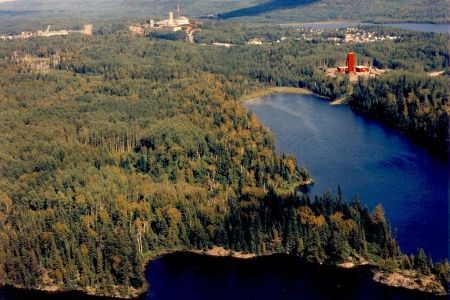As a camp which has lived and died on the back of gold, it’s perhaps no surprise that the Kirkland Lake district is thriving on the fortunes of the precious metal.
Related exploration continues to shine in the region, as more and more drills are put into the ground to suss out the next major gold deposit or resource expansion.
“With the price of gold being between $1,300 and $1,400 an ounce, it makes it pretty easy to raise money on the market for gold projects,” said Gary Grabowski, resident regional geologist for the Kirkland Lake district.
“That’s what’s being looked at here, as you can imagine. Kirkland Lake is about gold.”
To put it into perspective, Grabowski says that the value of assessment work filed for the district in 2010 was $19 million; comparatively, it reached $27 million in 2009 and $17 million in 2008.
“In previous years, we used to think if we got $8 million to $10 million that it was a really good year.”
There are nearly 200 active exploration projects in the district. These range from individual prospectors to active producing companies such as Brigus Gold, which has plans to drill up to 25,000 metres with five rigs at its Black Fox Complex at a cost of $7 million.
Even Kirkland Lake Gold, which is pursuing a flurry of expansion efforts, is doubling its exploration spending to $7 million in 2011 as its increases drilling by 56 per cent to reach 283,000 feet.
Standing atop the camp with an “honorable mention,” said Grabowski, is Queenston Mining. The company has plans to spend $25 million across nine properties this year, with up to 16 drill rigs.
Whether it’s to the west of the city with the likes of West Kirkland Mining or within the city proper, however, much of the most significant work is centered around the region’s many past-producing properties.
“There really haven’t been too many new gold discoveries anywhere in the province,” said Grabowski. “All the mines that are going into production are where people have found an old mine, drilled beside it or under it.”
One company that’s used this system for success is Armistice Resources, which has had its sights on the McGarry gold mine project since the mid-1980s. That long-held dream is set to become a reality later this year, when the McGarry will reach commercial production.
With a target of 25,000 to 40,000 ounces of gold per year, Armistice CEO Todd Morgan described the company’s annual production plans as “a modest-sized project” compared to other projects due to start in region through the likes of Detour Gold and Northgate.
The mine will employ up to 100 staff throughout its nearly five-year life, though ongoing exploration at the site is likely to extend that period into a “long-life project,” said Morgan.
Custom milling will be done at facilities in northeastern Ontario and northwestern Quebec with excess capacity which will help the company avoid spending the big dollars required to build a new facility.
The company has also signed an option agreement for the adjoining past-producing Kerr-Addison Mine, one of the camp’s most prodigious properties.
Between 1938 to 1996, it produced 11 million ounces of gold.
Having been untouched for nearly 15 years, the property is a major confidence boost for Armistice, as the mine was so lucrative in its heyday that very little exploration was done beyond the immediate mining areas. This provides the company with a number of high-priority targets to explore, and drilling on the site has already begun.
Armistice is set to spend $3 million on the property this year, with the potential for more if particularly promising exploration successes arise.
“I don’t think you’ll find any other projects in Canada that were so big in their heyday and haven’t been touched in this current gold market,” said Morgan. “Just about every other project has been worked on, and with a lot of success. If you look at every major mining project coming onstream, they’re all related to historical mines in the vicinity. And here we are with probably one of the biggest underground gold mines every in Canada, and it hasn’t been touched in 15 years.”




